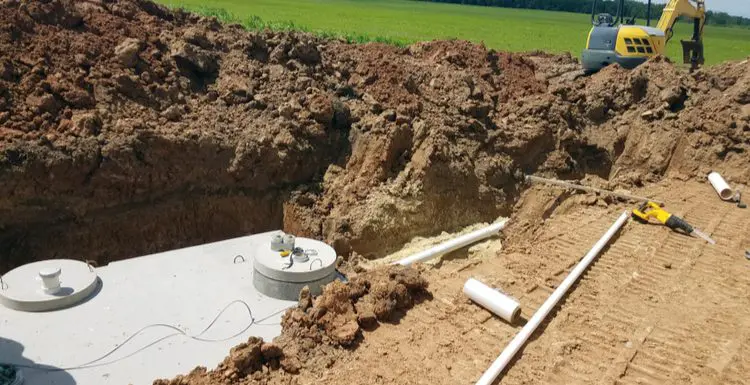If you live in a rural area far from the city’s sewer lines, then you have a septic tank on your property.
This is a way to remove the wastewater from your home if you’re not using the local septic system.
What Is a Septic Tank?
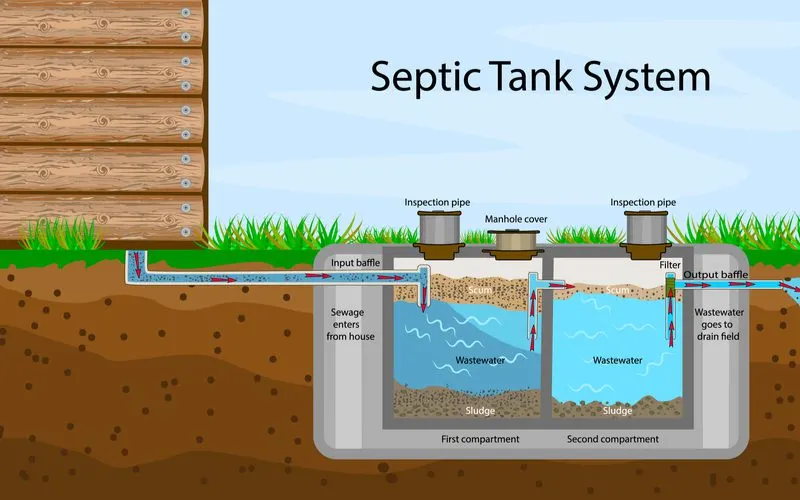
KajaNi/Shutterstock
A septic tank is a small waste management system in your yard. It treats sewage and wastewater from rural homes.
Otherwise, the water would have to go to your municipality’s treatment plant.
Every time you flush the toilet, the sewage makes its way to your septic tank. There, the solids sink to the bottom, and the liquid drains out.
Solid waste disintegrates over time. You should pump your tank every three years for maintenance.
What It Does
A septic tank is a way to treat and dispose of the waste you create inside your home.
It takes runoff from sinks, toilets, and bathtubs out of your house. You can bury the tank in your yard to keep it from taking up too much space.
The septic tank separates the waste into three layers:
- Scum at the top
- Wastewater in the middle
- Sludge on the bottom
Bacteria break down the scum and sludge over time, and the wastewater drains through outlet pipes to get back into the soil.
How Septic Tanks Work
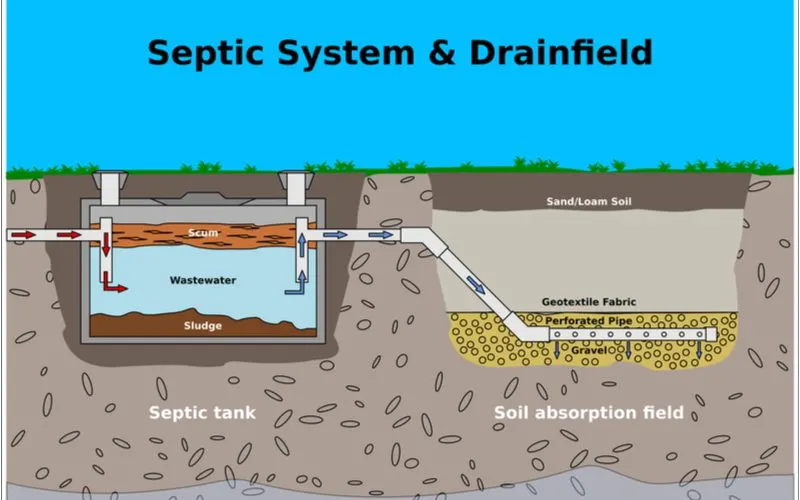
Slave SPB/Shutterstock
The short answer gave a brief overview of what a septic tank does, but there’s more to it than that.
They aren’t just connected to toilets, which produce blackwater. Septic tanks also handle greywater from washing machines, bathtubs, and sinks.
Soap and detergent scum can also enter the tank from the bathroom, kitchen, and laundry room. This residue floats to the top of the tank as scum.
When the liquid drains, contaminants remain in the tank. They break down over time and stay at the bottom of the tank as sludge. Natural processes help this matter decompose.
The liquid continues to the drain field, where it’s released into the soil. Bacteria in the ground neutralize the wastewater. Releasing too much wastewater into your drain field can cause it to flood. It can also back up your toilets and sinks.
You must bury your septic tank at least 10 feet from your house. This distance can vary according to your state or county requirements.
Many professionals like to put it as close as legally possible to use less piping. This also prevents the likelihood of difficult clogs over time.
If you use well water, then you have to consider that distance, too. Your septic tank has to be at least 50 feet from your well for health reasons.
Different Septic Systems
Most septic systems allow water to flow through pipes and into the tank. There, it has time to separate before flowing to the drain field.
However, different types of systems are available. Some use pumps to push the wastewater to the tank. Others treat the waste inside the tank as a larger treatment plant would.
It uses an aerobic system to add oxygen to the tank. This promotes bacterial growth to quickly decompose the waste.
The evapotranspiration system keeps the water from draining into the soil.
A watertight material lines the bed of the system to hold the wastewater until it can evaporate. Because the water needs heat to evaporate, this system is only recommended in arid climates.
In some areas, the cluster septic system connects several houses to one larger system. Each house has a septic tank, but the wastewater leads out to an expansive drain field farther from the community.
Septic Tank Design
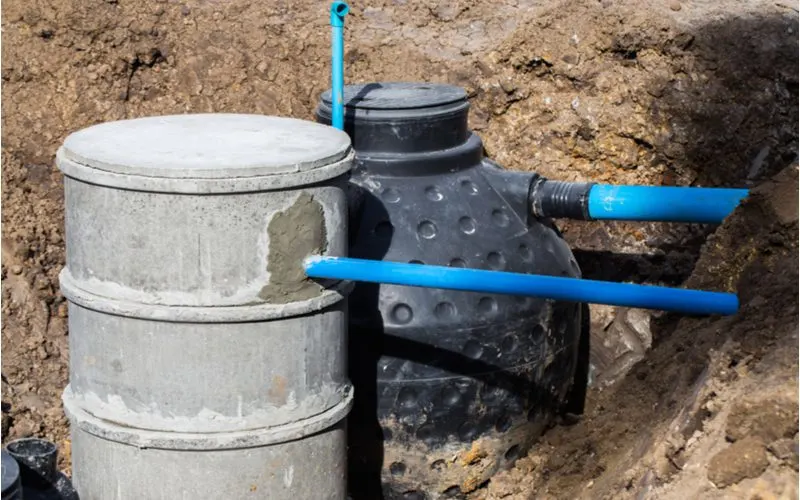
Phattara Away/Shutterstock
Septic tanks are pretty simple. Because they’re buried underground, they don’t have to look attractive, so their design is practical.
They’re rectangular or round and built from watertight plastic, concrete, or fiberglass. This prevents the waste from getting into the soil before it decomposes.
Septic tanks have one or two compartments inside. Most new tanks have two compartments because they’re more efficient at separating solids and letting wastewater flow out.
There are two pipes connected to the tank: one leading in and one leading out. One allows the sewage from the house to pour into the septic tank. The other lets the wastewater drain toward the drain field.
Each pipe has a tee or baffle installed. On the inlet pipe, the tee slows the flow of waste so it doesn’t disturb the waste that’s already inside. On the outlet pipe, the tee keeps the solids from leaving with the wastewater.
Every septic tank has at least one 12-inch manhole in it. This is a way to access what’s inside from above. Both the inlet and outlet pipes also have inspection pipes over them, so you can check for clogs in each.
Septic tanks hold at least 1,000 gallons and are suitable for a three-bedroom house. Larger houses need bigger tanks.
If you have a whirlpool tub, you must have a septic tank that can hold an additional 250 gallons because of how much water it uses.
Septic Tank Problems
If you don’t keep an eye on your septic tank, problems might add up until you have to replace the whole system. This gets expensive, so it’s better to put in regular maintenance to avoid it.
You should pump your septic tank every three years to ensure it works efficiently. Pumping pushes out any clogs in the pipes and removes solids that haven’t decomposed.
You don’t want to apply too much pressure when you’re pumping—it can damage your pipes. Instead of doing it yourself, you should call a professional to avoid additional problems.
Aside from pumping your tank, you should also check your drain field often. If it’s flooding, you know there’s a problem with your septic tank. It’s possible that solid waste might have clogged the pipes.
A clogged tank won’t only flood your drain field. It can also cause waste to back up into your toilets and sinks, even flooding your house.
If your water is draining slowly, it might mean that something has backed up your tank. A gurgling noise as water drains tells you that the liquid is struggling to get past a clog.
Clogged pipes can cause bad smells, but odors can also mean that there are toxins in your septic tank. Bacteria break down the solid waste, but if it’s not working, then you need to clean your tank.
If you flush items that aren’t biodegradable, you’ll block the system’s pipes. This includes diapers, sanitary items, and wipes. You also shouldn’t wash down cat litter or coffee grounds, which can stick together and dry out in the pipes.
Flushing anything that isn’t biodegradable means it’s going to stay in your tank until you clean it out. That can lead to odors not just in the yard but also coming from your toilets and drains.
Things to Consider
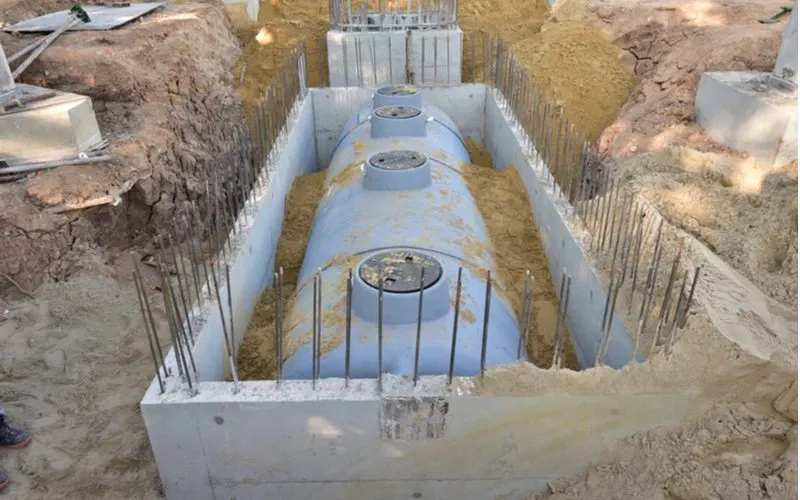
HacKLeR/Shutterstock
If you live on a property that uses a septic tank, you need to be more cautious than you would if you had access to the city’s sewage system.
- Only flush organic waste and biodegradable toilet paper. Your septic tank can’t handle diapers, wipes, sanitary items, cat litter, coffee grounds, or paint. Bulky items will block the pipes.
- Don’t use chemicals in your septic tank. You might think they’ll help keep it clean, but they disrupt the natural balance of bacteria that breaks down the waste.
- Don’t flush the entire system. If you flush the system, the force will disrupt the scum and sludge that remains in the tank. This can clog your pipes. It might also cause your drain field to flood.
- Check the drain field regularly. Taking care of your drain field keeps the rest of your septic system working. If it floods, you need to check your pipes for clogs.
- Don’t funnel wastewater into an area with trees or buildings. Roots and structures compact the soil. It should be loose so the water can flow.
- Conserving water can prevent your septic tank and drain field from flooding. Turn off the water when you brush your teeth, and install low-flow toilets so you use less water per flush.
Frequently Asked Questions
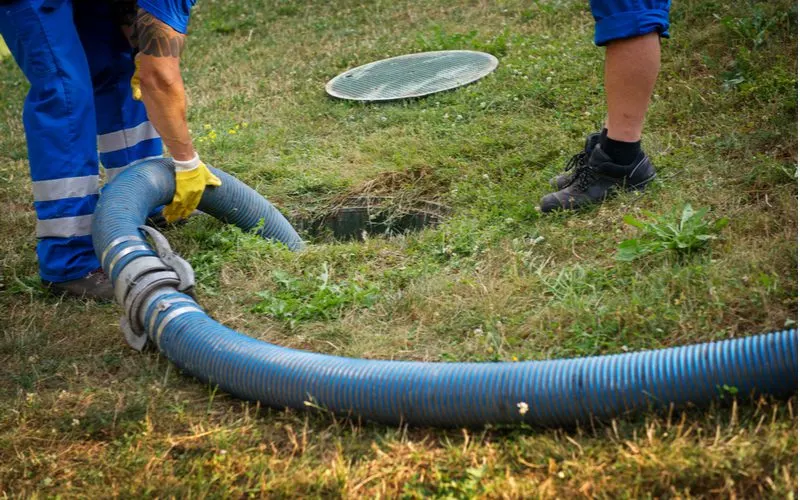
KaliAntye/Shutterstock
Now that you know the answer to “What is a septic tank?” you might have other questions.
The answers to some of the most frequently asked questions are below.
Is a Septic Tank Good or Bad?
There’s no good or bad to it because if you live beyond city limits, a septic tank is a necessity.
It’s the most efficient way to remove blackwater and greywater from your home. Once in the tank, bacteria take care of the solid waste and the liquid travels to the drain field.
Is It Better to Have a Septic Tank or Sewer?
A septic tank needs more maintenance than a sewer line. It’s on your property, so you want to keep your eye on it to ensure it doesn’t damage your home or your land.
It’s more efficient to have a septic tank than to use so much energy to send water back to the treatment plant. This means septic tanks are better for the environment.
What Happens When the Septic Tank Is Full?
A clean, cared-for septic tank won’t get full. The natural processes in the tank will decompose solid waste. The water flows to the drain field.
If your septic tank is full, solid waste might have built up in the tank. Something might have clogged the pipes, causing water to back up. Call a professional to take care of this problem.
So, What Is a Septic Tank?
Within city limits, houses use the municipality’s sewage treatment plant to dispose of wastewater.
A septic tank is how rural homes separate and decontaminate their waste. These systems are very effective if you take care of them.

